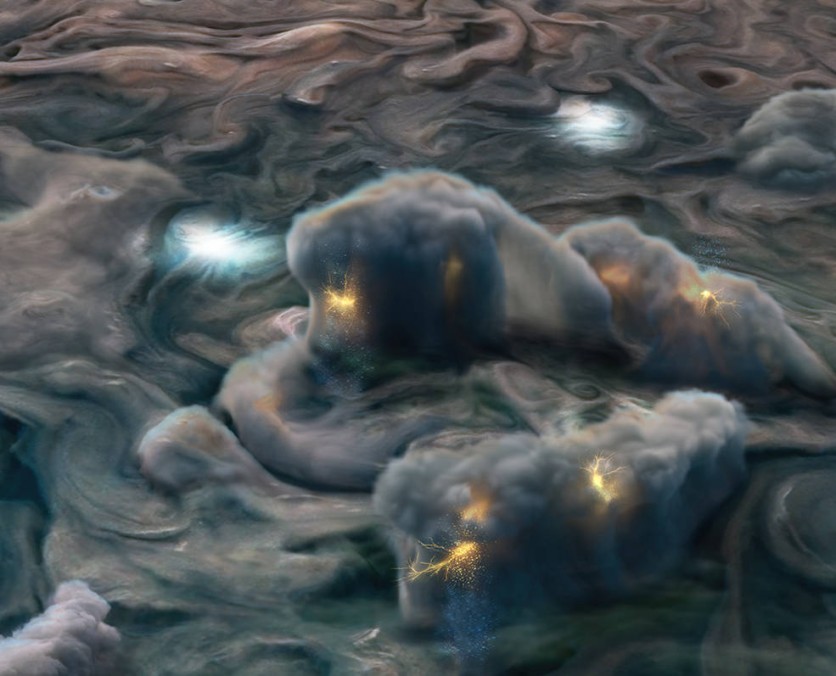The National Aeronautics and Space Administration (NASA) has discovered something new about our solar system's giant gas planet, Jupiter, through the results of the Juno mission.

Shallow Lightning and Mushballs
According to a post by NASA on their official website, the agency discovered that the planet is home to an unexpected electrical discharge known as "shallow lightning" that originates from a cloud that contains ammonia-water solutions.
In context, our lightning here on Earth originates from clouds with water clouds.
This is not the first time that NASA has discovered Jovian lightning as they first saw glimpses of the phenomenon back in 1979 through the agency's Voyager mission, however, they first thought that these flashes of lightning are the same as ours.
Additionally, experts believe that the lightning only happens in areas where water exists in all three phases, which means it should occur around 28 to 40 miles (45 to 65 kilometers) below the visible clouds.
New Discovery via Juno
Every mission to Jupiter or has passed the gas giant has all captured these Jovian lightnings as bright spots, so scientists first thought they occurred deep into the clouds.
Nevertheless, Juno's Stellar Reference Unit captured them on the planet's dark side, telling a different story than what was initially perceived.
"Juno's close flybys of the cloud tops allowed us to see something surprising - smaller, shallower flashes - originating at much higher altitudes in Jupiter's atmosphere than previously assumed possible," said Heidi Becker, the lead at Juno's Radiation Monitoring Investigation at NASA's Jet Propulsion Laboratory.
With the discovery, Becker and her team have a new theory.
The team believes that these powerful thunderstorms hurl water-ice crystals high up the planet's atmosphere into the planet's water clouds, where they encounter atmospheric ammonia vapor, which then melts the ice.
With that, they form a new ammonia-water solution.
At this height, temperatures are already below 126 degrees Fahrenheit or minus 88 degrees Celsius, making it impossible for pure water to exist
"At these altitudes, the ammonia acts like an antifreeze, lowering the melting point of water ice and allowing the formation of a cloud with ammonia-water liquid," Becker said. "In this new state, falling droplets of ammonia-water liquid can collide with the upgoing water-ice crystals and electrify the clouds. This was a big surprise, as ammonia-water clouds do not exist on Earth."
The team's findings on shallow lightning will be published in the journal Nature this August 6.
Slushy Hailstones
Besides lightning, the American space agency has also discovered that the planet is also home to hailstorms, but unlike here on our planet, those in Jupiter are slushy and rich with ammonia.
These hailstones are called "mushballs" by the science team back at the agency.
Their theory suggests that these slushy hailstones "kidnap" the atmospheric ammonia and ammonia in Jupiter's upper atmosphere and carry them into the depths of the planet's atmosphere.
These mushballs then get so big that drafts can't carry them and fall deeper into the planet, where they will meet warmer temperatures and eventually evaporate.
The findings for mushballs are published earlier this week in the Journal of Geophysical Research: Planets.
This article is owned by TechTimes.
Written by: Nhx Tingson
ⓒ 2025 TECHTIMES.com All rights reserved. Do not reproduce without permission.




